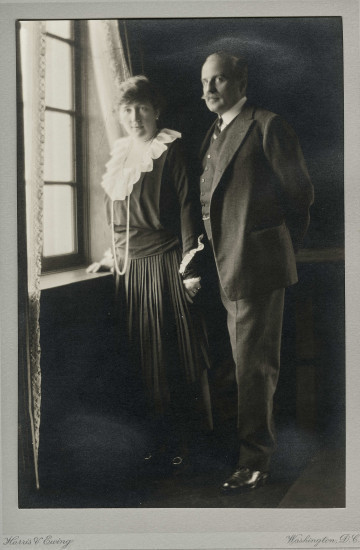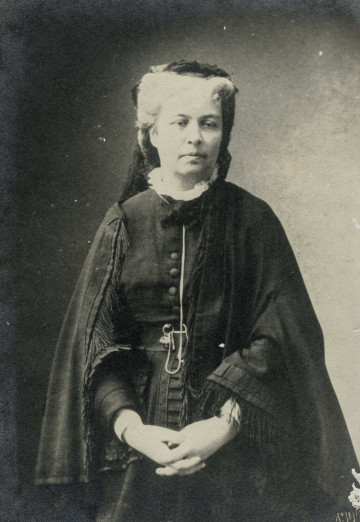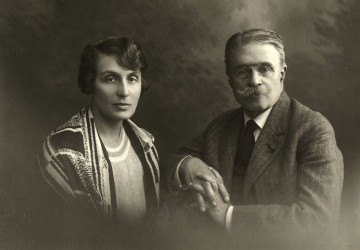
Teresa Lubomirska, née Wodzicka, and Kazimierz Lubomirski
20th century
Castle Museum in Łańcut
Part of the collection: photography
The photograph shows Prince Kazimierz Lubomirski from the branch of the Przeworsk line of the Lubomirski princes. A man with gray hair and a thick mustache, dressed in a vest and jacket, a collar and tie is visible. In the lower right corner of the photograph, there is the caption "Z. Garzyński – Kraków".
The photo was developed in the atelier of Zygmunt Garzyński (1887-1969), which was located at Sławkowska Street in Cracow. The atelier was opened in 1918 by the aforementioned Garzyński and over time he employed his wife and daughters there. In the interwar period, the atelier had two more branches: in Krynica and Zakopane. The photographic studio exists to this day and it is called Foto Buzek-Garzyński and it is located at Szlak Street. During the Second Polish Republic, the studio took pictures of people such as Józef Piłsudski, Ignacy Mościcki, Wincenty Witos or Cardinal Adam Stefan Sapieha.
Kazimierz Lubomirski was born in Przeworsk in 1869 as the youngest son of Jerzy Henryk and Cecylia, née Zamoyska. His elder brother was Andrzej Lubomirski, the second landowner of Przeworsk, a literary curator of the Ossoliński National Institute in Lviv, and above all, an outstanding industrialist. He graduated from the Jan III Sobieski High School in Cracow, law studies at the Jagiellonian University in Cracow and studies at the Paris School of Political Science. In the years from 1901 to 1913, he was a deputy to the National Sejm (National Parliament) in Lviv. At the turn of 1918 and 1919, together with his brother Andrzej, he negotiated with the Allies the possibility of transporting the army of General Józef Haller in order to support Polish forces fighting against the Ukrainians.
Subsequently, he became the first representative of the independent Poland in Washington, a position he held from 1919 to 1922. In 1920, he purchased the property with a large building for $160,000 and gave it to Poland for a symbolic dollar. Since then, it has been the permanent seat of the Polish embassy. As a representative, he obtained loans for his country. After returning to Poland, he became the president of the Polish Olympic Committee, and from 1923 he was also a member of the International Olympic Committee. He died in 1930 in Cracow.
dr Łukasz Chrobak
Object type
photography
Technique
photographic
Material
photographic paper
Creation time / dating
Owner
Muzeum - Zamek w Łańcucie
Identification number
Location / status

20th century
Castle Museum in Łańcut

XIX/XX wiek
Castle Museum in Łańcut

20th century
Castle Museum in Łańcut
DISCOVER this TOPIC
National Museum in Lublin
DISCOVER this PATH
Educational path